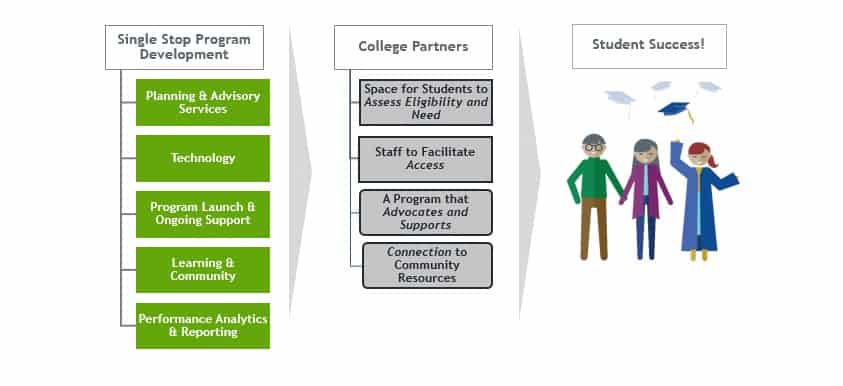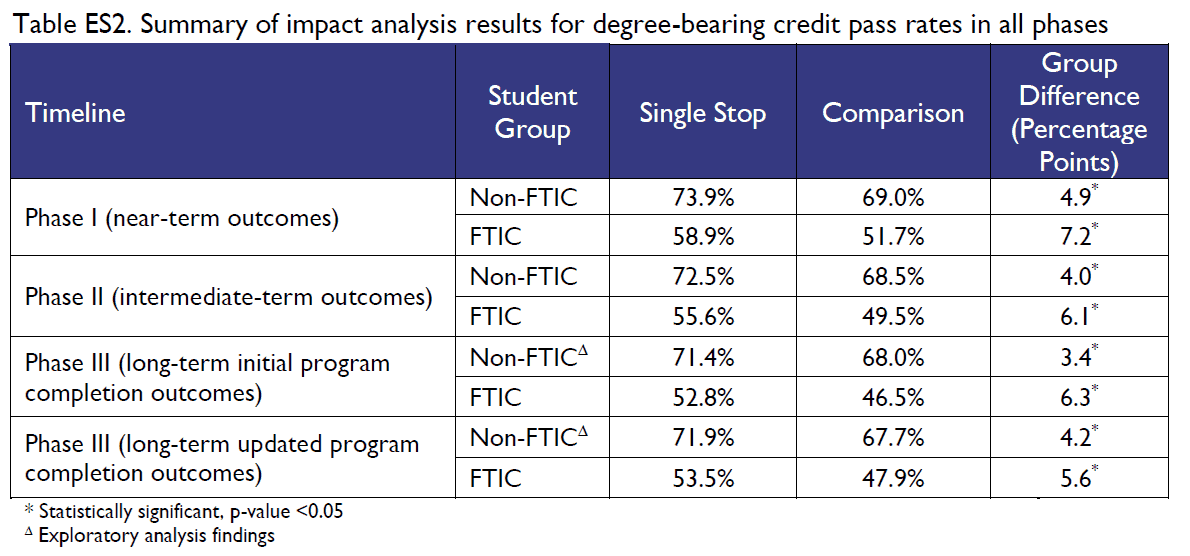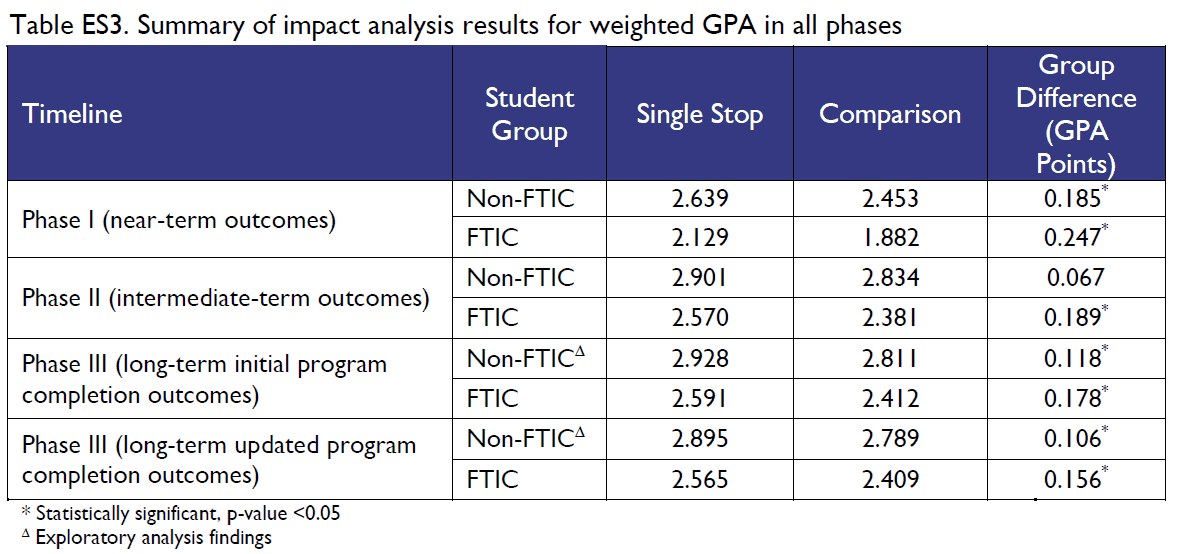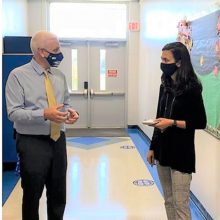

“I faced every barrier listed on there that was designed for me to not be successful here at community college. I’m a non-traditional student, I’m a student-parent … and dealing with the systems, I’ve never felt so low [than] to ask for help. And thinking that those statistics were going to keep me in a hole,” said Melissa Aponte, a student at the Community College of Philadelphia (CCP).
“Now, I’m in honors, and I’m involved on campus because of services like this. Single Stop can really help you stay here.”
Single Stop is a nonprofit that works to provide coordinated access to a safety net of benefits and connect people to the resources they need to attain higher education, obtain good jobs, and achieve financial self-sufficiency.
Aponte shared the intimate details of her journey through community college — from doing homework with her son on her lap when she didn’t have childcare, to navigating online courses without reliable internet access — at a recent event on the college’s campus titled “Staying the course: Supporting college persistence in a Single Stop.”
The event, hosted by Single Stop, focused on the recent findings of a study that looked at the organization’s impact on academic outcomes at CCP. For many community college students, a range of unforeseen financial challenges — from a flat tire to legal fees to difficulty accessing federal benefits — can threaten their basic needs, hindering their ability to attend classes, keep up with coursework, and pursue a higher education. Many college campuses offer services to support students through those hardships, but resources may be siloed, difficult to access, or underutilized by students. That’s where Single Stop’s solution comes in.
More on Single Stop
Launched in 2001, Single Stop USA is a national nonprofit organization that works to reduce poverty and help low-income families and students achieve economic security. Single Stop’s mission is to “build pathways out of poverty by leveraging partnerships and technology to connect people to existing resources, all through a unique one-stop shop.”
One of the ways Single Stop works to fulfill that mission is by establishing those “one-stop shops” on community college campuses where students can access coordinated wraparound support services like benefits screening and application assistance, tax preparation services, financial counseling, and more. Single Stop partners with colleges to integrate their economic empowerment model with student support and financial aid departments on campus, with the ultimate goal of increasing student retention and graduation. Single Stop’s college partnership model is outlined below.


Since Single Stop’s education programming launched in 2009, their offices have spread to over 30 campuses from Oregon to Massachusetts, connecting 269,272 students to $548 million in benefits and services. In North Carolina, Single Stop has offices at two universities (Winston-Salem State, Johnson C. Smith) and eight community colleges (Asheville-Buncombe Technical, Davidson, Nash, Edgecombe, James Sprunt, Central Piedmont, Alamance, and Robeson).
Study examines impact of Single Stop at CCP
Single Stop established offices at CCP in the fall of 2013 and provides students with benefits screening and application assistance, financial counseling, tax preparation services, legal assistance, and immigration consultations. Located in the poorest of the country’s 10 major cities, almost 28,000 students are enrolled in credit and noncredit classes at CCP’s main campus and three regional centers. The college’s student body is roughly 76% minority, and 73% of all students receive some type of financial aid.
In 2014, Metis Associates, a research and evaluation firm, began a multi-phase study to examine the impacts of Single Stop services on student outcomes at CCP.
Study details
The study was split in three phases: near-term (outcomes through spring 2015), intermediate term (outcomes through spring 2016), and long-term (initial program completion through spring 2017 and updated program completion through fall 2017). In addition to multiple time frames, the study also had multiple components. An impact and exploratory study were conducted to gather quantitative findings, while an implementation study was conducted to give context to the quantitative results and offer best practices and recommendations for program changes.
Participants in the quantitative study were those who accessed at least one major Single Stop service at CCP from May 2014 to May 2015. Among the 1,152 students that fit that bill, roughly 32% were attending college for the first time (FTIC) and the remaining 68% had prior exposure to college (non-FTIC). Separate analyses were conducted for FTIC and non-FTIC students to isolate the impact of Single Stop on each group. The most commonly-accessed Single Stop service was health benefits (65%), followed by tax benefits and legal benefits, and 88% of the students that accessed Single Stop were receiving financial aid.
The quantitative impact evaluation aimed to determine if CCP students served by Single Stop outperformed their peers on semester-to-semester persistence rates, the ratio of completed to attempted degree bearing credits, and grade point average. These analyses provided rigorous evidence because they were based on matched study samples where students participating in Single Stop were matched and compared with similar non-participating students based on factors like demographics, income status, and academic characteristics.
Additionally, seven quantitative exploratory research questions were included to better understand how and why impacts may occur, including things like the estimated impacts of combinations of major Single Stop services on key academic outcomes for both FTIC and non-FTIC students. While the exploratory questions offer some evidence of program effectiveness, the results provide less rigorous evidence than the impact evaluation due to less statistical control for confounding variables.
The qualitative implementation study examined the nature and quality of Single Stop implementation at CCP, best implementation practices, challenges and additional areas of support needed, and recommendations for program changes. This part of the study included things like interviews with CCP administrators and Single Stop staff, a review of program documents, and focus group interviews with students.
What was the impact of Single Stop at CCP?
During Single Stop’s “Staying the course” event, three representatives from Metis Associates summarized the findings and implications of their study. Michael Scuello, senior associate for design and analysis at Metis Associates, put it simply: the results of the study proved “outstanding.” Of the 24 different results studied in the quantitative impact analysis, 23 were statistically significant. In other terms, almost 96% of the study’s findings point to Single Stop services having a significant positive impact on three key target outcomes for both FTIC and non-FTIC students at CCP.
Let’s break down those results a little further. First, semester-to-semester persistence: Students using Single Stop services at CCP were significantly more likely to persist in college than their matched peers. While this holds true for both FTIC and non-FTIC students receiving Single Stop services, the findings are most substantial for FTIC students. The largest difference in persistence rates between groups occurred for FTIC students during the intermediate-term, when those receiving Single Stop services were 11 percentage points more likely to stay enrolled than their counterparts not receiving Single Stop services.


Students using Single Stop services at CCP also had significantly higher ratios of completed to attempted degree-bearing credits than their counterparts. Once again, this trend held true for both FTIC and non-FTIC students, but the largest difference among groups occurred for FTIC students in the near-term when they had a credit pass rate 7.2 percentage points higher than their counterparts.


Finally, FTIC students using Single Stop had, on average, significantly higher weighted GPAs than their counterparts. The difference in average GPA for non-FTIC students in the intermediate-term was the only outcome that didn’t prove statistically significant, although non-FTIC students had higher average GPAs than their counterparts during the remaining phases of the study.


“I really want to emphasize how positive the confirmatory findings are,” said Susanne Harnett, managing senior associate for research and evaluation at Metis Associates.
“We don’t always see this. When you have a rigorous study where you are matching in a really rigorous way so that you’re looking at comparative students who are similar in all different ways, often times you don’t find anything. … To have all those statistically significant findings is really key.”
In the quantitative exploratory study, several significant differences were found. However, no discernible pattern of service delivery was associated with improved student outcomes. The report finds that this “may be indicative of the tailored approach to providing services to individual students … based on their needs, which appears to be more crucial to academic achievement than the services themselves.”
“There was no single service that showed it was responsible for the results that we’re seeing,” said Scuello. “They tailored the services to individuals so they’re getting exactly what they need. So these results actually make a great deal of sense. We shouldn’t find one single service that’s driving the results because these students are getting the services they need to get the results they need. That’s how wraparound services work.”
Sarah Crawford, national education director for Single Stop, said this study stands out as being unique among previous evaluations of the program.
“It’s the first one that takes a longitudinal look, measuring persistence over multiple years, measuring graduation,” Crawford said. “Having this type of evidence of impact is so important for the work that Single Stop does on a national scale as we look to continue how we impact the lives of students through partnerships here in Pennsylvania and across the country.”
Lessons learned from Single Stop’s success at CCP
Beyond the quantitative findings, the study also examined how Single Stop was implemented at CCP to identify best practices and areas for potential improvement. Through interviews with faculty and students, as well as review of documents related to the program, Metis Associates highlighted the following key ingredients for Single Stop’s success at CCP.
- Single Stop staff blended a unique combination of strong knowledge with deep caring in their work with students. CCP students and staff said that the Single Stop staff were relatable, genuinely caring, and deeply knowledgeable about the content area.
- Single Stop was integrated in a thoughtful and comprehensive manner.
- Single Stop has support from top CCP administrators.
- Other support organizations at CCP work well together, maximizing the benefits for students.
For Crawford, the the qualitative findings are equally as important as the quantitative.
“Understanding how CCP has had all of this success is critical. … There’s a tremendous amount to be gained by considering how we scale that success across the single stop network and beyond so that we can meet the basic needs of students so that they can propel towards graduation,” said Crawford.
During a panel discussion following the presentation of results by Metis Associates, Samuel Hirsch, vice president for academic and student success at CCP, reflected on the launch of Single Stop at CCP six years prior. Hirsch emphasized the importance of getting to students quickly and intentionally, listening to them, understanding them, and providing both a resource and a solution.
“Many of our students have gone through systems, so you can imagine the systems that haven’t done well by them. It could be a school system, it could be other systems … and we don’t want to replicate that, but we have to build trust first,” said Hirsch. “So if we say to a student: ‘Trust us, we are here to help you,’ — well, so did other systems … so I think it’s very important that we establish ourselves as an entity that really does help them in the end.”
Paula Umaña, another panelist and the Single Stop director at CCP, described the work that she and her staff do every day as a “little bit of magic.”
“We create an environment where students feel safe. We create a space … where we are able to connect students with the resources so their needs are met. And we are able to do that just by listening,” said Umaña.
For Umaña, Single Stop’s work at CCP is about more than just connecting students with services — it’s about leveraging close partnerships with other organizations across the college and the city to expand and deepen what services are available to students.
“Systems and services work to a certain degree if the connections that we have as humans [and] the ability to nurture those relationships … allow students to have open doors to more resources or services,” said Umaña. “The credit goes not only to my team at Single Stop but to the college at large, because we created that village.”
Aponte, answering the final question of the panel discussion, provided the following advice for her fellow students at CCP:
“Just connect with people and don’t be afraid to ask for help. It doesn’t make you less of a person and [isn’t something] to be ashamed of … that’s your only opportunity to be successful in school.”
To read the full Metis Associates report on Single Stop at CCP, click here.
A recording of Single Stop’s “Staying the course” event, held at the Community College of Philadelphia on April 1, is below.


